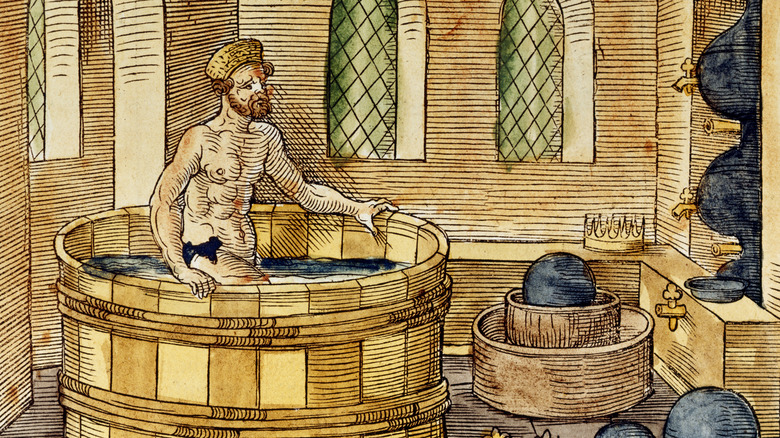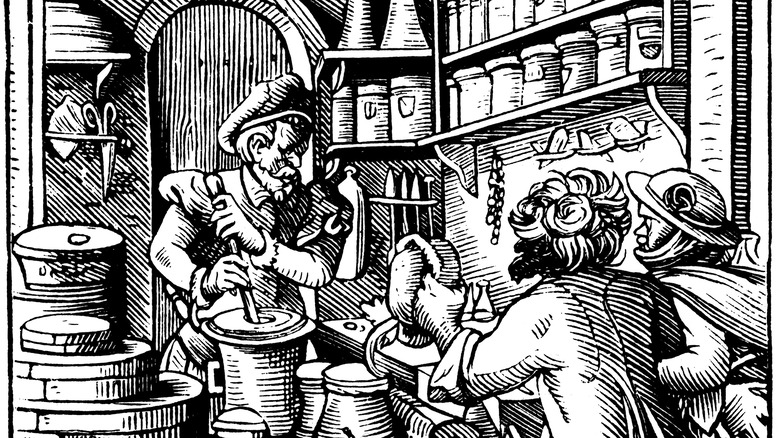Why Everything We Know About Medieval Hygiene Is A Myth
When you think of medieval times, you might picture the legends of King Arthur, or even something out of a movie like "Robin Hood." In most books or movies we read or see about this time period, there is a common theme that runs through them: that medieval times were dirty. Very dirty. Dirt and filth everywhere, especially if you were a common peasant. Because of these artistic interpretations, people generally believe that medieval hygiene practices left a lot to be desired. Yet, according to Factinate, all that we might believe about health and cleanliness in the middle ages may not be entirely true.
They say that "cleanliness is next to Godliness," and during this time period, it turns out a lot of people believed that to be true. Because of this, it is possible that those who believed in the tenants set forth by the Catholic Church bathed more often than we have been led to believe. Public bath houses were the norm, and though people bathed there, they may not have gotten really "clean" as we define it today, according to HealthyWay. If you were lucky enough to have access to a private bath, there were complications with that as well, considering indoor plumbing was not a thing. So while medieval folk weren't exactly sparkling clean from bathing, more of an effort was made than we originally thought.
Bathrooms and healthcare
One of the main contributing factors to the idea that these were absolutely filthy times is wondering how they got rid of waste — a.k.a. bathrooms. As stated in About History, toilets or privies were usually just septic holes in the floor. If you were rich you might have access to a room where the privy was located, but generally speaking those were not readily available. As waste accumulated, it was removed to another location away from the town or village, and sometimes ended up in the rivers. In the bigger cities, waste was sometimes dumped in the streets, but generally people tried to limit their bathroom activities to the outhouses or other designated areas. This contradicts the assumption that people during this time just went whenever and wherever they wanted.
When it comes to medieval health care, dealing with medicine and diseases, cleanliness is not the first thing that comes to mind. However, folks during this time did have a bit more medical knowledge than we give them credit for. HealthyWay points out that though they didn't have all the scientific knowledge that we have today, they understood basic principles. They understood that wounds needed to be clean. They also were using processes like cautery and stitches, and utilizing homeopathic remedies like moss and honey to treat illness and wounds. It is knowledge like this that shows us that those who lived during this time were more conscious of cleanliness than we might think.

